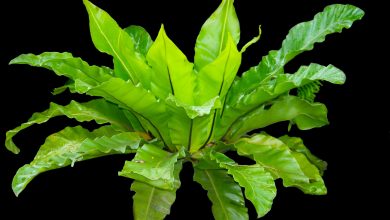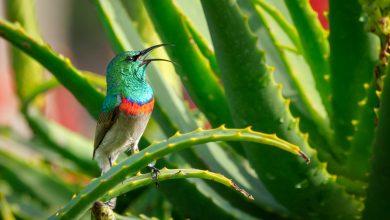11 Types of Willow Trees

Willows are a distinctive and unique family of trees known as Salix, which include over 400 varieties growing in the wild. Willows can range from small shrubs growing as little as a few feet off the ground to majestic, expansive trees that can reach over 100 feet in height and width. In this article, we will look at 11 of the more common types of willow trees and find out what makes each species unique.
All willow trees can thrive in wet environments, as their roots have an unquenchable thirst for water. However, willow trees are also highly adaptable, and some can grow in dryer soil. Willows typically have brittle wood that can be useful for weaving baskets but are highly vulnerable to broken branches from storms.
How to Grow Willow Trees
The main drawback of the willow tree family is a robust root system that is always yearning for moisture. One of the reasons you’ll often see willow trees growing near lakes and ponds is the easy access their root systems have to water, along with their utility in preventing erosion. In a residential setting, you will want to avoid planting a willow tree near a septic or sewer system, as the roots will seek out the moisture sources and puncture the pipes.
The most common way of growing willow trees is to find a one-year-old tree with bare roots. You will want to soak the roots in a bucket for at least 24 hours in advance. The soil you plant in should be prepared to two times the diameter and depth of the tree’s roots. After you plant the tree, water it generously for the first year.
All willow trees need to be planted in wet or moist soil. When considering how much to water a young willow tree, think of their thirst for a damp environment as unquenchable. Willow trees prefer full sun but can still thrive in partial shade. They can also adapt to various pH levels in the soil.
Types of Willow Trees

1. Almond Willow
Botanical name: Salix trianda
Native to North America in both the United States and Canada, the Salix trianda goes by a variety of names. Also known as the peach-leaf willow and Wright willow, this species will grow from 30 to 50 feet high. Almond willows will only grow in hardiness zones 3a to 5b, leaving this species limited to only the northern states in the U.S.
The almond willow does not have a long lifespan but is a fast grower, and its strong roots help to prevent erosion near waterways.

2. American Willow
Botanical name: Salix discolor
Sometimes confused with the goat willow, the American willow is a popular choice for designers due to its red branches and delicate white buds. The Salix discolor is a smaller growing species that can be grown as a shrub or a small tree. At its smallest, this willow can grow to just two feet in height and up to 25 feet tall at its max.
The American willow can grow in hardiness zones 4b to 8b, which allows it to flourish throughout most of the United States.

3. Black Willow
Botanical name: Salix nigra
The Salix nigra can grow to be one of the largest species of willow trees and is native to the eastern half of the United States. The black willow has a versatile skill set and a variety of uses.
Native Americans used black willow in the weaving of baskets, as well as to relieve headaches and fever. Black willow bark is effective as an aspirin substitute due to the properties of its salicylic acid, which is similar to the acetylsalicylic acid in Aspirin.
Black willow trees typically grow between 40 and 100 feet tall but have the ability to reach 150 feet in height. The trees feature narrow leaves about three inches in length and can be identified by bristly catkins, which grow between two and four inches long.

4. Corkscrew Willow
Botanical name: Salix matsunanda
The corkscrew willow gets its name from distinctive twisty branches, which add an extra layer of interest and keep the trees attractive in the winter. Native to north China, as are weeping willows, some believe the corkscrew willow to be a random mutation of a weeping willow, known as the Salix babylonica.
The corkscrew willow will grow between 20 and 50 feet tall. It can be grown in U.S. hardiness zones 4a to 9b, meaning it can grow throughout the vast majority of the United States.

5. Narrowleaf Willow
Botanical name: Salix exigua
Also known as the gray willow, dusky willow, and the coyote willow, the Salix exigua is native to the western half of the United States, going as far east as Texas and Kansas. The narrowleaf willow has come in handy as a building material for furniture and poles due to its flexible branches.
Slender green leaves about four to five inches in length shoot off the reddish-brown branches in bunches. At the tips of the branches, the tree will flower with bristling offshoots.

6. Dappled Willow
Botanical name: Salix integra
One of the more ornamentally satisfying varieties of willow trees is the dappled willow. The tree keeps yearlong interest that begins with its leaves that appear completely pink in early spring before slowly turning green as spring becomes summer. When it blooms, the tree features beautiful white and pink flowers. As summer becomes fall, the leaves will turn from green to yellow before falling to the ground, revealing striking red branches.
The dappled willow is easy to care for and prefers full sun to partial shade. A little shade in the afternoon would be ideal. It will grow around four to six feet in height and width.

7. Goat Willow
Botanical name: Salix caprea
One of the more appealing willows to grow and admire is the goat willow. This variety can grow up to 30 feet tall and has a potential lifespan of over 300 years. Rather than the narrow leaves that most willows feature, the Salix caprea features unique large oval leaves with delicate gray whiskers coating the underside of the leaves.
The goat willow is sometimes referred to as the pussy willow due to catkins, which can resemble cat paws. On female trees, once the tree is pollinated, the catkins turn into fluffy gray seeds, closely mimicking a dandelion when pollinated.

8. Golden Willow
Botanical name: Salix alba ‘Tristis’
A variation of the white willow, the golden willow features bright yellow twigs and slender, four-inch-long leaves which change from green to yellow in the fall. Golden willows can grow up to 100 feet tall and 100 feet wide. The golden willow closely resembles a weeping willow with the drooping design of its graceful branches.
Golden willows can grow all over the United States and can be found growing throughout hardiness zones 2a to 9b.

9. Weeping Willow
Botanical name: Salix babylonica
The most popular among all members of the Salix family is the weeping willow. And it’s not hard to see why, with its incredibly unique drapery of branches and leaves that act as a naturally occurring wind chime. As it matures, expect a weeping willow to grow as much as ten feet each year.
A native of northern China, weeping willows are often found along lakes and rivers. In larger yards, the weeping willow works well as a focal point. However, you should only expect a lifespan of about 30 years before replacing it.

10. White Willow
Botanical name: Salix alba
The white willow is one of the more attractive members of the willow family. The white willow was brought to North America by Europeans in the 1700s, and the species has naturally made its way throughout the country.
The Salix alba features white undersides to its narrow leaves, which can shimmer in the wind. This is a fast-growing willow that needs plenty of room to grow, as it can reach up to 100 feet in height.
An alternative use of the white willow is using the bark as a pain reliever. Studies have shown that bark from the white willow has been especially effective in treating lower back pain.

11. Bebb Willow
Botanical name: Salix bebbiana
A North American native, the Bebb willow is not one that most will want to feature in their backyard. The Salix bebbiana can grow in climates across the United States but has a short lifespan and is prone to health and pest issues.
Male and female specimens have different flower growth. On males, the catkins grow up to one-inch long with bursts of tightly packed flowering shoots. The female catkins can reach just over two inches long with slender and more spaced out flowers. Bebb willows generally grow as shrubs but can grow as trees up to 25 feet tall. They do not require much attention to keep them growing. Bebb willows can flourish in all levels of sunlight and are drought-tolerant once fully grown.



